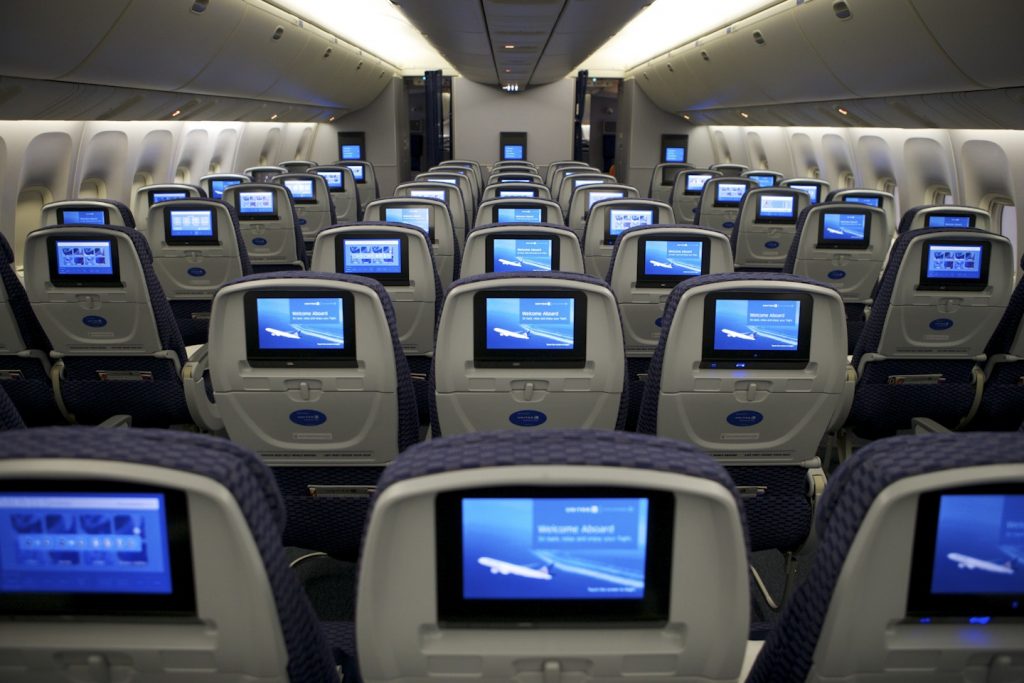Skift Take
Give credit to United CEO Oscar Munoz for reaching new labor deals with many of United's employee groups. But buying labor peace is expensive. And now United's new executive team needs to come up with some creative ways to offset the increased costs.
United Airlines will need to raise revenues, perhaps by increasing ticket prices, to offset its increased labor costs and help it close its margin gap to Delta Air Lines and American Airlines, United’s CFO suggested Monday.
Reaching new contracts with United’s unionized workforces was a major priority for Oscar Munoz after he took over a year ago. He has been successful, negotiating successful agreements with pilots, flight attendants and customer service workers. Next could come United’s mechanics, who should soon vote on a new tentative agreement.
But all these labor deals are costly. While announcing its third quarter earnings on Monday — the airline made roughly $1 billion in profit, excluding special items — United warned investors to expect a major increase in non-fuel costs later this year.
United said Tuesday it expects those costs to rise between 4.75% and 5.75% in the fourth quarter, on a year-over-year basis. Much of the increase is from labor costs and the figure does not include the not-yet-ratified mechanics deal, CFO Andrew Levy said.
United is facing the increased costs just as the new top three members of Munoz’s team — Chief Commericial Officer Julia Haywood, President Scott Kirby and Levy — wrestle with how United should close its margin gap compared to Delta and American. Delta earns significantly more in revenue per passenger, while American earns slightly more.
Levy suggested United can close the gap, even with the new labor-related costs. But United’s customers may be on the hook.
“That’s our reality,” Levy said. “It’s our new labor expense, and we are going to find ways to pull other levers to try to pass that on to our customers in the form of higher revenues and find other ways we can reduce expenses.”
Levy said United needed to reward its employees and make them “passionate about winning.” And he suggested closing the gap is more of a long-term strategy than something United can do right away.
“We are not really focused on 2017,” he said. “We are going to try to enhance our profitability over the next several years.”
As for the recently concluded quarter, United made significantly less than the $1.7 billion in net income, excluding special items, it reported third quarter of last year. But Levy attributed most of the decline to an income-tax related issue. Taking that into account, he said, United’s income for the quarter fell only $97 million year-over-year. Its pre-tax margin was 15.7 percent.
Business is, however, a little weaker than in 2015. United’s passenger revenue per available seat mile, or PRASM, an industry metric measuring how much money United makes for each mile it flies, decreased 5.8 percent, year-over-year. As it has in other recent quarters, United blamed several factors, including a strong U.S. dollar, less corporate business from the energy-sector and lower average ticket prices.
The revenue dip was strongest on trans-Atlantic flights, and Haywood said Monday the airline will trim capacity to Europe in the fourth quarter. On its third quarter earnings call last week, Delta Air Lines also reported relative weakness in the trans-Atlantic sector.
The Daily Newsletter
Our daily coverage of the global travel industry. Written by editors and analysts from across Skift’s brands.
Have a confidential tip for Skift? Get in touch
Tags: earnings, labor, united airlines
Photo credit: United is paying its employees a lot more money than it was, and it will need to find a way to recoup those costs. United Airlines / United Airlines
